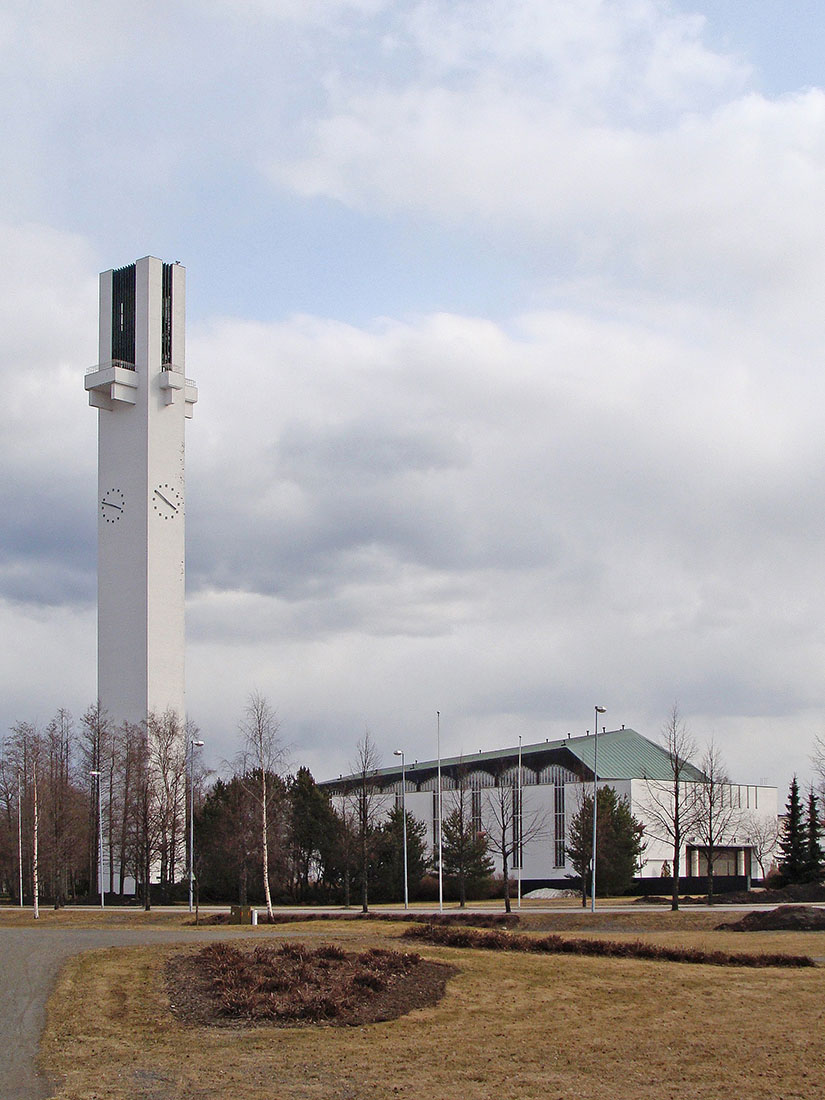 |
 |
 |
 |


Seinäjoki Church and Parish Facilities
Koulukatu 24, Seinäjoki
1951 - 1960
In 1951 Alvar Aalto took part in the competition for a large church with parish centre for the small town Seinäjoki, submitting a proposal named 'Lakeuksien risti' (Cross of the Plains). In contrast to the other proposals, Alvar Aalto decided not to place the parish rooms under the church or in a smaller, separate building. Instead he seized upon the important religious festivities commonly organized in the Ostrobothnian region during summer time. Further the design by Alvar Aalto also included a vicrage with apartments for the vicar and two chaplains, located south of the church. The layout of his proposal provided a large piazza in front of the church's main facade, sloping down towards the entrance and laterally girded by the parish facilities. As a consequence of this space-consuming layout, the proposal by Alvar Aalto exceeded the prescribed construction limit by some twenty meters, and the jury did not award him a prize. The prize sum was equally divided betwenn three less striking entries, but the jury recommended the proposal by Alvar Aalto for implementation. In 1956 Alvar Aalto was commissioned to develop the proposal further, and the church was built between 1958 and 1960, followed by the large parish centre in front between 1964 and 1966. The built church basically follows the competition design, using white rendered brick instead of black granite as facade material for cost reasons as the most important alteration. In the built ensemble only the side chapel is clad with granite. As an important feature is to be mentionoed the campanile with a height of 65 meters and in the shape of a stylized cross, it is located on the north side of the complex. Of a monumentally impression and strongly vertical emphasis, the campanile is visible from afar in the endless plains of the environment and acts as a symbol for the town. The interior of the church is slightly wedg-shaped and symmetrical. The space is 47 meters long and has a seating capacity for a congregation 1400. Between the bearing columns and the exterior wall are long and rudimentary aisles. The overall design of the church speaks a language of mdernisem. In winter darkness, the church appears like a row of gigantic candles standing in the snow. The building is covered with a large roof made of sheet copper. The parish centre contains a large assembly hall, catering facilities for the congregation, a clubroom, offices, classrooms and several apartments for employees. The realized scheme differs from the competition mainly by the open staircase, located on axis from the main facade of the church and connecting to the town hall square, which was built later. This staircase seperates the two wings of the parish facilities, each wing with a height of one or two stories, built in white rendered brick.